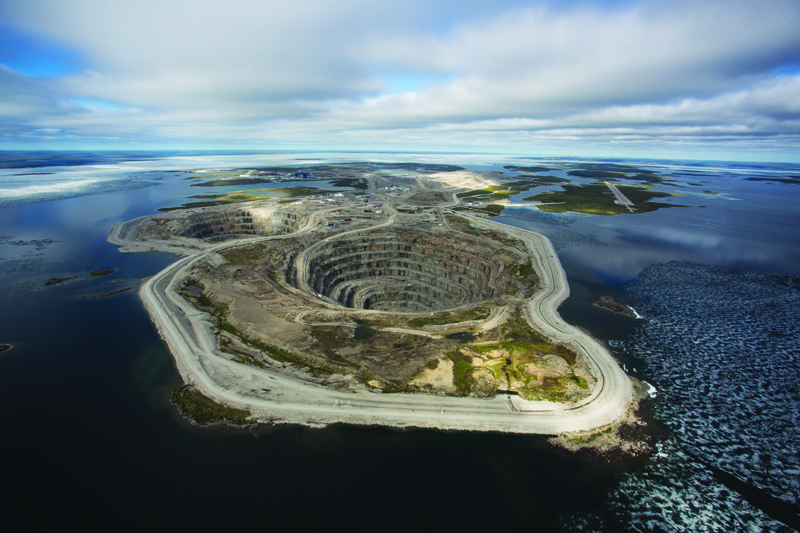Homegrown success: Canada’s triumphant diamond industry

By Pierre Leblanc
At 150 years old, Canada has much to be proud of. Beyond its stunning and diverse landscapes, the wealth of our diverse natural resources are as great as the country is vast. The Canadian diamond industry marks just one of our national successes.
Exploration
Diamond exploration started in the 1960s with De Beers. The company was exploring for minerals which inevitably lead to the presence of diamonds. However, it was Stewart Blusson and Charles Fipke who, in 1991, discovered what was to become Canada’s first diamond mine. It was named ‘Ekati’ after a Dene word meaning ‘fat lake,’ and this discovery triggered a massive diamond exploration rush. Shortly after in 1994, the kimberlite pipes of the Diavik Diamond Mines were discovered by Aber Diamond Corporation.
Mining matters
The two initial discoveries lead to the construction of two diamond mines: Ekati and Diavik. The Ekati mine started to produce diamonds as recently as October 1998 and it was followed by the Diavik mine in May 2003.
In just a short five years, Canada became the third largest producer of gem diamonds in the world, after Russia and Botswana. These two mines are still in operations today.
More mines were built over time: Jericho in Nunavut, Snap Lake, and Gahcho Kué in the Northwest Territories, Victor in Ontario, and Renard in Quebec. In Canada, eight companies are listed on the Toronto Stock Exchange (TSX) as being involved in diamond mining.
However, there have been some challenges along the way. Nunavut’s Jericho mine faced a perfect storm back in 2006 when faced with technical challenges, a lower than expected grade, and a crushing shift in the exchange rate with the U.S. dollar. Since international diamond sales are done in U.S. currency, it meant reduced income at a time when expenses were increasing as 2006 proved a short winter road season and did not allow for the economical resupply of the mine.
De Beers’ Snap Lake mine had difficulties, too, which included delays, technical challenges, and lower prices for their diamonds. Eventually, De Beers put the mine up for sale, and it’s still on the market today.
Despite this, Canada has produced in excess of 180 million carats for a total value of more than $30 billion. The vast majority of production was exported to Antwerp, the world’s centre for rough diamonds, while some were exported directly to Israel and India, thus contributing to the Canadian trade balance.
Environmental awareness
Diamond mining is one of the cleanest forms of mining since it separates the diamonds mechanically, and does not use chemicals such as sulfuric acid.
Diamond mining is also subject to stringent environmental standards in Canada, which includes a remediation fund. Diamond mines are required to have a reclamation plan in place, so the site can be remediated when it closes. Part of this plan includes an on-hand bond large enough to support the remediation at any point during the lifespan of the mine. Fortunately, taxpayers do not pay for the clean-up of mines such as Yellowknife’s Giant gold mine, which went bankrupt.
Most Canadian mines maintain ISO14001-certified environmental management systems. All mines have extensive environmental monitoring programs supporting scientific and traditional knowledge studies that are aimed at increasing knowledge and understanding of a variety of species such as wolverine, wolf, caribou, grizzly bears, and aquatic ecosystems.
For instance, the Diavik mine operates a large-scale wind farm to develop a better understanding of how wind mills operate in the Arctic’s extreme climate. These initiatives hope to help with the deployment of clean power production in this fragile environment.


